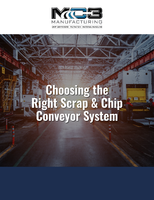ESPRIT Mold v9, by DP Technology, on Display at EuroMold 2007
DP Technology, an innovator in the industry of computer-aided manufacturing (CAM), will showcase ESPRIT Mold Version 9 - the newest generation of its high-speed 3-axis and 5-axis CAM system - at EuroMold 2007, slated to take place Dec. 5-8 in Frankfurt/Main, Germany.
ESPRIT Mold v9 will be on display at EuroMold in Hall 8, at booth J160, where visitors will be treated to demonstrations of the new product and personal interaction with staff members from DP Technology.
EuroMold, a world trade fair that merges various industry disciplines and focuses on manufacturing "from design to prototyping to series production," will feature moldmaking, tooling and design application development technologies.
The latest release of ESPRIT Mold includes significant performance increases for the 3D programmer that results in the reduction of cycle times of 25-50 percent or more while simultaneously increasing part quality and reducing programming time and effort.
ESPRIT Mold is a member of the ESPRIT family of CAM software, which also includes programming for 2-5 axis milling, 2-22 axis turning, 2-5 axis wire EDM, multitasking mill-turn machining and B-axis milling.
Each year, a new version of the ESPRIT Mold software is released, providing users with significant advancements. This particular release incorporates a large number of advancements that include a new geometric kernel that provides support for a wider variety of solid and surface part geometry, enhanced 3-axis machining cycles for increased performance, improved user interface - making it easier and quicker to create toolpath -improvements to the existing 5-axis machining cycles, and a new 5-axis "AutoTilt" machining cycle that automatically creates a collision free 5-axis machining cycle from existing 3-axis toolpath. ESPRIT Mold is designed to run on both Microsoft Windows XP and Microsoft Vista operating systems.
New Geometric Kernel
The new geometric kernel included inside ESPRIT Mold v9 provides expanded support for a wider variety of solid and surface part geometry and enhanced editing functions. All the geometric entities of the model, such as surfaces, faces, curves, lines and circles, are now directly accessible inside the system. Existing entities may be edited and new ones created using the new geometry kernel and a newly simplified user interface. The new "magnetic" snap makes it significantly easier to select geometric entities from the screen. New import abilities include advanced triangulation of the model, resulting in improved accuracy and decreased calculation time.
Enhanced 3-axis Machining Cycles and Improved User Interface
ESPRIT Mold v9 includes the ability to use a "temporary check surfaces" function to restrict the toolpath and avoid areas such as holes and cavities that are not to be machined. All toolpath created by the software is now visualized immediately on the screen, utilizing the selected layers and colors.
The re-machining cycles have been enhanced to optimize the machining processes by applying differing optimal strategies for horizontal and vertical zones of the work piece. All of the 3-axis machining cycles have been improved to offer greater tool control and more comprehensive collision avoidance, including both rapid and cutting movements.
The user interface has been upgraded with revised dialog boxes that include self- explanatory icons and pictures for greater ease-of-use, while the revised menu structure that now closely follows the Windows standards make the software easier to learn. Improved file management, faster and more realistic simulation, and faster loading and saving of project files all add up to a greatly improved user experience.
Expanded 5-axis with New AutoTilt 5-axis machining cycle
New for ESPRIT Mold v9 is the AutoTilt machining cycle that transforms any 3-axis toolpath (roughing, re-machining or finishing) into an optimized, collision free, continuous 5-axis toolpath. The automatic continuous 5-axis machining capability of AutoTilt will reduce the number of setups required to machine a part, allow the use of shorter, more rigid tooling and higher cutting speeds, and ultimately result is shorter machining times and improved part quality. Other improvements in 5-axis functionality included within this release focus on ease-of-use, which is a result of a revised user interface and improved tool control as a result of the improved geometric kernel.




